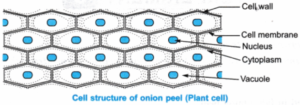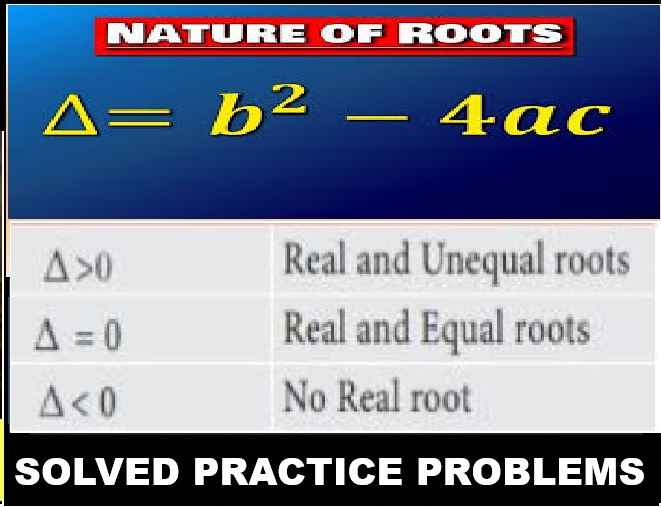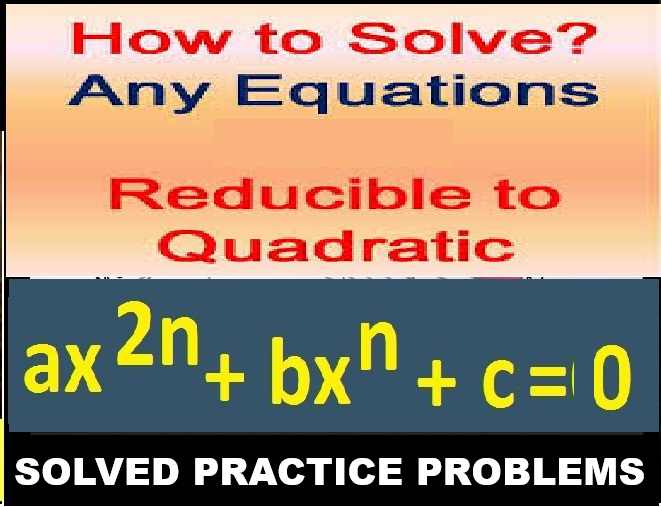The Cell Class-6 Srijan ICSE Biology Solutions Chapter-3 Veer Bala Rastogi Srijan Publishers Solutions. We Provide Step by Step Solutions of Fill in the blanks, Give functions, Define the following, Differentiate between the following, Match the following, True and False, MCQs and Answer these Questions of Veer Bala Rastogi Srijan Biology Publishers. Visit official Website CISCE for detail information about ICSE Board Class-6.
The Cell Class-6 Srijan ICSE Biology Solutions Chapter-3
| Board | ICSE |
| Class | 6th |
| Subject | Biology |
| Book Name | Srijan |
| Chapter-3 | The Cell |
| Unit-1 | The Cell |
| Topic | Solution of exercise questions |
| Session | 2023-24 |
The Cell ICSE Class-6th Srijan
Biology Solutions Chapter-3
A. Fill in the blanks with suitable words:
1. Blood cells are the smallest cells in our body.
2. Electron is used to study structure of cell.
3. All life processes of the cell take place in cytoplasm.
4. The cavity of vacuole is filled with cell sap.
5. Nucleus is the control center of the cell.
B. Give one word for the following:
Question: 1. The nonliving covering around plasma membrane in a plant cell.
Answer: Cell wall
Question: 2. The scientist who coined the term ‘cell’.
Answer: Robert Hooke
Question: 3. The process of colouring the cells.
Answer: Cell staining
Question: 4. Plastids that give colour to flowers and fruits.
Answer: Chromoplasts
Question: 5. The control center of the cell.
Answer: Nucleus
Question: 6. Rounded body present in the nucleoplasm.
Answer: Nucleolus
Question: 7. The network of chromatin material.
Answer: Nucleus
Question: 8. Organelle that traps solar energy for photosynthesis.
Answer: Chloroplast
C. Differentiate between the following:
Question: 1. Unicellular organism and multicellular organism
Answer:
| Unicellular organism | Multicellular organism |
| 1. Body is made up of single cell | Body is made up of numerous cells. |
| 2. Division of labour is at the organelle level. It gives a low level of operational efficiency. | Division of labour may be at cellular, tissue, organ and organ system level. It gives high degree of operational efficiency. |
| 3. A single cell carries out all the life processes | Different cells are specialized to perform different functions. |
| 4. The cell body is exposed to the environment on all sides | Only outer cells are specialized to face the environment. Inner cells are devoted to other functions. |
| 5. An injury of the cells can cause death of the organism. | Injury or death of some cells does not affect the organisms as the same can be replaced by new one. |
Question: 2. Chloroplast and chromoplast
Answer:
| Chloroplasts | Chromoplasts |
| 1.These are colorful plastids. | These are green plastids, the largest cell organelle of plants. |
| 2. They have no chlorophyll content. | They have chlorophyll pigments. |
| 3. No binary fission takes place. | They Can divide by binary fission. |
| 4. They Can divided by binary fission. | They have their own DNA and ribosome. |
| 5. They have no role in photosynthesis. | They have a role in photosynthesis |
Question: 3. Nucleus and nucleolus
Answer:
| Nucleus | Nucleolus |
| 1. A large spherical body inside a cell. |
Present inside nucleus. |
| 2. Bound by nuclear membrane. | Not bound by a membrane. |
| 3. Contain DNA as chromatin or chromosomes. |
Rich in RNA but does not contain chromosomes. |
| 4. Controls the cellular functions and inheritance. |
Controls the arrangement of ribosomes and is involved in RNA metabolism. |
Question: 4. Plant cell and animal cell
Answer:
| Plant cell | Animal cell |
| 1. Cell wall is present. | Cell wall is absent. |
| 2. Centrosome is absent. | Centrosome is present. |
| 3. Plastids are present. | Do not contain plastids. |
| 4. One or more prominent vacuoles are present. |
Vacuoles, if any, are small and temporary. |
| 5. Have definite cell shape, polygonal. | Cell shape is not definite. |
D. Answer these questions:
Question: 1. Why does our body need new cells?
Answer: When cells become damaged or die the body makes new cells to replace them. This process is called cell division. One cell doubles by dividing into two.
Question: 2. Why is the cell called the basic unit of structure and function of living organisms?
Answer: A cell is capable of carrying out all life processes, such as nutrition, excretion, respiration, etc. Hence it is called as the functional unit of life. The cell is the smallest unit of life and all the living beings are made up of cells. Hence a cell is called the structural unit of life.
Question: 3. Give salient features of the cell theory?
Answer: The three principles of cell theory are: All living organisms are composed of one or more cells. The cell is the basic structural and functional unit of living organisms. All cells arise from pre-existing cells.
Question: 4. What is cell sap? What does it contain?
Answer: The cell sap is a non-living content of the vacuole. Cell sap is the fluid manufactured by the cytoplasm of the living plant cell.
Plant cells have very large vacuoles, which contain a solution of sugars and other substances, called cell sap.
Question: 5. What are plastids? Name different types of plastids and their functions.
Answer: Plastids are double membrane-bound organelle that helps in photosynthesis. They have some specific pigments thus giving specific color to the plants. Due to these pigments plastids are divided into three types chloroplasts, chromoplasts, and leucoplasts.
Functions of plastids:
- They perform Photosynthesis.
- Photosynthesis is the primary function of chloroplasts in leaves.
- They store starch and can synthesize fatty acids and terpenes.
- They are responsible for the characteristic color of leaves, fruits, and flowers.
Question: 6. Why are chloroplasts found only in plant cells? Explain.
Answer: Chloroplasts contain green pigment called chlorophyll which helps in manufacture of food through the process of photosynthesis. Since, animals do not manufacture food so they do not need chloroplast. And hence, chloroplast is found only in plant cell.
Question: 7. Why is the nucleus celled the control center of the cell?
Answer: The nucleus celled the control center of the cell because nucleus contains a material called gene which controls all activities of cell and its characteristics.
Question: 8. Give functions of vacuole in plant cell.
Answer: In plants, the vacuole is crucial for growth and development and has a variety of functions, including storage and transport, intracellular environmental stability, and response to injury. Depending on the cell type and growth conditions, the size of vacuoles is highly dynamic.
Question: 9. Why is cell division essential?
Answer: Cells need to divide for your body to grow and for body tissue such as skin to continuously renew itself. When a cell divides, the outer membrane increasingly pinches inward until the new cells that are forming separate from each other. This process typically produces two new (daughter) cells from one (parent) cell.
Question: 10. Draw the cells of onion peel as seen under microscope. What are their features?
Answer:

The cells of an onion skin are generally rectangular in shape and range in size from 0.25 to 0.4 millimeters in length. These cells lie close to each other with intercellular spaces between them. These cells are surrounded by distinct cell walls.
F. Match of columns:
| Column A | Column B |
| 1. Acetabularia | (a) Nucleus |
| 2. Vacuole | (b) Unicellular alga |
| 3. Chromatin | (c) Cell turgidity |
| 4. Pseudopodia | (d) Cellulose |
| 5. Cell Wall | (e) Amoeba |
Answer:
| Column A | Column B |
| 1. Acetabularia | (a) Unicellular alga |
| 2. Vacuole | (b) Cell turgidity |
| 3. Chromatin | (c) Nucleus |
| 4. Pseudopodia | (d) Amoeba |
| 5. Cell Wall | (e) Cellulose |
F. State whether the following statements are true or false. If false, rewrite the correct form of statements:
| Statements | True/False |
| 1. Nucleus contains chromatin net and nucleoplasm. | T |
| 2. The cells observed by Robert Hooke in a slice of cork were living cells. | F |
| 3. The cheek cells are rectangular in shape. | F |
| 4. Anton van Leeuwenhoek gave the cell theory. | F |
| 5. Cell wall is found in animal cells only. | F |
| 6. Leucoplasts give colour to the fruits. | F |
G. Encircle the odd one out and give reasons for your choice:
Question: 1. Chloroplasts, chromatin, leucoplasts
Answer: Odd one out:- chromatin
Give reason:- Chromatin is the indistinguishable mass of DNA molecules.
Question: 2. Nucleoplasm, cytoplasm, chromatin, nucleolus
Answer: Odd one out:- cytoplasm
Give reason:- Cytoplasm provides shape to the cell.
Question: 3. Yeast, bacteria, fish, Amoeba
Answer: Odd one out:- fish
Give reason:- This body is adpated to live in water only.
Question: 4. Nerve cells, muscle cells, guard cells, blood cells
Answer: Odd one out:- guard cells
Give reason:- By opening and closing stomata, they facilitate gas exchange for photosynthesis and help minimize water loss.
H. Give reasons for the following:
Question: 1. Cell have different shapes.
Answer: The shapes of each cell help them to fulfill their roles effectively.
Question: 2. Plasma membrane is described as selectively permeable membrane.
Answer: The plasma membrane is a thin layer of protein and fat surrounding the cell. It is called a selectively permeable membrane because it enables only certain chemicals and molecules to enter or exit the cell.
I. Multiple Choice Questions:
1. Cell was discovered by
(a) Robert Brown
(b) Robert Hooke
(c) Leeuwenhoek
(d) Charles Darwin
Answer: option (a) Robert Brown is correct.
2. The longest cells are
(a) Nerve cells
(b) Hemp fibres
(c) Muscle cells
(d) Xylem vessels
Answer: option (a) Robert Brown is correct.
3. Cell wall is made up of
(a) Lipids and proteins
(b) Lipids only
(c) Cellulose
(d) Starch
Answer: option (a) Robert Brown is correct.
4. Which organelle is surrounded by two membranes?
(a) Nucleus
(b) Lysosome
(c) Ribosome
(d) Centrosome
Answer: option (a) Nucleus is correct.
5. The smallest cells of human body are
(a) Nerve cells
(b) Red blood cells
(c) Muscle cells
(d) White blood cells
Answer: option (b) Red blood cells is correct.
6. Animal cell differs from the plant cell in the absence of
(a) Nucleus
(b) Vacuole
(c) Cell wall
(d) Cell membrane
Answer: option (c) Cell wall is correct.
— : End of The Cell Class-6 Srijan ICSE Biology Solutions Chapter-3:–
Return to- ICSE Class -6 Srijan Biology Solutions
Thanks.
Please share with your friends if you find it useful.


